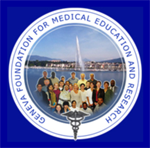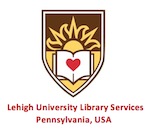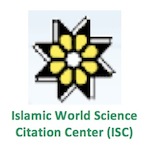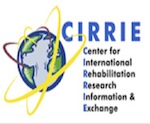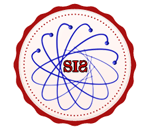Introduction
Several years ago, the mother's primary postpartum hemorrhage was a big issue after their deliveries. Primary Postpartum Hemorrhage (PPH), defined as more than 500 ml of vaginal bleeding within 24 hours of delivery, is a significant cause of maternal morbidity and mortality worldwide. Many researchers have taken a hard path to study the reasons and the preventive measures for this complication. Meanwhile, the mother's pathway for caring about the postpartum experience has not yet been highlighted in most previous studies. So, this research aims to study the mother's postpartum hemorrhage care pathway. The overview of the mother care pathway could shed light on what could be good and what is supposed to be prevented. Also, it can be a guide for future improvement for pregnant women.
This study will assess the knowledge and care pathway for Postpartum hemorrhage from the mother's perspective. Postpartum hemorrhage is the leading cause of maternal morbidity and mortality worldwide. Although most PPH could be avoided by identifying the risk factors, as most previous researchers looked up their studies, the maternal mortality rate from primary PPH did not change. However, almost no studies have identified the care pathway for primary PPH from the mother's perspective.
Postpartum hemorrhage is defined as the loss of blood after delivery which equals or more than 500 milliliters, nevertheless the mode of delivery [1]. Postpartum hemorrhage is the predictable complication post-delivery that generates maternal mortality and morbidity worldwide. The need for blood transfusion after PPH usually does not identify the risk factors [2]. According to [3], some measures have been recommended to improve primary care for postnatal mothers with PPH to save the lives of postnatal mothers with postpartum hemorrhage. There was an increasing rate of atonic PPH confirmed by [4], and associated risk factors with severe atonic PPH in vaginal birth have been epidural episiotomy and labor induction.
Although WHO had reported many statistics about trends in obstetric postpartum hemorrhage, they did not have information about the care pathway by mothers in each country. This offers a real opportunity for researchers to investigate the incidences and risks of PPH in their populations. In Saudi Arabia, there was evidence regarding incidences of the primary atonic PPH and its related risk factors. As [4] found, these studies were done in three regions in Saudi Arabia. Therefore, she recommended more intense and comprehensive effort is needed in Saudi Arabia.
Review of Literature
The primary post-partum hemorrhage
Primary Postpartum Hemorrhage (PPH) is the loss of more than 500 mL of blood after the vaginal delivery or 1000 mL after cesarean delivery. If this happens within 24 hours post-delivery, this is defined as early or primary PPH. In contrast, it will be defined as a late or secondary PPH if it occurs 24 hours after delivery [1]. The postpartum hemorrhage rate has increased from 1995 to 2004 to 27.5% in the United States. [2] The prevalence of PPH is almost 6% globally. The incidence of obstetric hemorrhage in Japan is 23% from 2010 to 2014. 52% of all maternal deaths were PPH after transvaginal delivery or cesarean section in Japan [3]. Meanwhile, a study of atonic PPH incidence in a tertiary hospital in Jeddah, Saudi Arabia, showed a 2.5% incidence rate from 2015 until 2018 [4].
The history care of women during labor and delivery used to be by visualizing blood loss and weighing the blood-soaked products. Although, this method had an underestimation of actual blood loss and could be used when no measures are available. Low blood pressure, elevated heart rate, fainting, and dizziness in the postnatal woman after the delivery are signs and symptoms of primary postpartum hemorrhage [5]. Almost 25% of women's etiology has no identifiable risk factor for developing PPH. And the two leading causes of primary PPH are the uterine atony and history of PPH [4].
Other risk factors for primary PPH include maternal age less than 18 years or advanced maternal age above 35 years, previous cesarean section, conception through IVF, pre-delivery anemia, stillbirth, trauma, iatrogenic trauma, labor induction, and augmentation. Also, uterine rupture, multiple gestations, anticoagulant medication, anemia, severe preeclampsia or HELLP syndrome, uterine fibromas, and prolonged labor. Moreover, placenta previa, placental abruption, abnormal placentation, and macrosomia were risk factors for PPH. These risk factors could identify the women with a high risk of PPH [6,7].
The most common complication of primary PPH is maternal morbidity and mortality, as the primary PPH is responsible for 25% of delivery-associated deaths. The morbidity rate results from the consequences of blood loss and hemostatic and resuscitative interventions [8]. Postpartum hypopituitarism (Sheehan syndrome) could also occur. Acute blood loss and/or hypovolemic shock during and after childbirth could lead to hypoperfusion of the pituitary and subsequent necrosis. Even though it could be asymptomatic, it may present with an inability to breastfeed, fatigue, hypogonadism, amenorrhea, and hypotension. Death secondary to hypovolemic shock would happen too.
Fluid overload reached extremity edema and pulmonary edema due to the fallout of fluid resuscitation. The latter is less common in young, healthy women, but it should be suspected in the setting of large fluid and blood product resuscitation. [7] Primary PPH prevention could be by treating the coagulation process. Tranexamic acid could be better managed after cesarean deliveries worldwide [9]. Some studies suggest that tranexamic acid and oxytocin can be used to treat primary PPH after cesarean sections [10]. One of the studies claimed that besides tranexamic acid, which has been more effective than oxytocin in reducing postpartum hemorrhage, ethamsylate is a safe treatment for reducing bleeding after cesarean section. Most previous studies did not mention the mother care pathway, as they focused on the medical care pathway and the intervention that could prevent the primary PPH.
So, as long as the primary PPH is still occurring anyway, the billions of studies interventions were trying to prevent it no matter what. We are focusing here on how the mothers are dealing with it and what pathway care is from their perspective. Like any epidemic crisis, we live after it in a new way to continue our lives with healthy habits, so here is our plan for a better quality of life and health after postpartum hemorrhage. Exploring the care pathway of postnatal women with primary PPH, if it is appropriate or not, might be a guide for new future improvement to another researcher. The current study hypothesized that: The effect of the care pathway by the mothers who have experienced primary postpartum hemorrhage with appropriate knowledge and attitude during their pregnancy will have an enhanced attitude and better outcome in the postnatal period.
Significance of the study
The significance of the study lies in the achievement of the following aims:
To assess the mother's knowledge and attitude during pregnancies and one-week post-birth.
To describe mother's care pathway during pregnancies and one week post-birth if it was appropriate or needs further improvement.
Health professionals need updates with the study that could reveal mother's experiences during pregnancy who have delivered the baby with primary PPH and look up the mother's care pathway in the perspectives of primary PPH. Also, this study can explore the mother's knowledge in identifying and understanding the desired care provided by the healthcare agencies to prevent them from getting risk factors.
Objectives of the study
The research explores the care pathway for primary PPH by postnatal women to see if the mother's pathway care practice is appropriate or needs further improvement.
Research methodology
The study design was a mixed qualitative and quantitative descriptive cross-sectional study design method. This study was conducted at Obstetrics Unit affiliated of King Abdul-Aziz University Hospital in Jeddah. A purposive sample of 40 mothers has been recruited to complete the study questionnaire/ semi-questionnaire in King Abdul Aziz Hospital/ Jeddah, Saudia Arabia. Data was collected immediately after the mother's delivery within 24 to one-week post-delivery. As there was no unique tool in the previous studies, the researcher created a questionnaire and used the reliability and validity of the tool through appropriate channels.
The data was collected by quantitative and qualitative utilizing structured and semi-structured questionnaires to describe and explore mother's care pathways in various aspects through interviews and filling the questionnaire. The questionnaire included data as demographic data such as age and nationality. A pilot study has been performed among 10% of the sample to assess the feasibility of the study. The study occurred at King Abdulaziz University Hospital- Jeddah City / Saudi Arabia, from November 2021 until February 2022 with the proper approval from the ethical board, faculty of nursing, Umm Al-Qura University.
Research hypothesis
The current study hypothesized that:
The mothers of primary postpartum hemorrhage with appropriate knowledge during their pregnancy will have an enhanced attitude and better outcomes.
Inclusion criteria
The sample will include mothers who fit the following criteria:
1. Mothers with primary postpartum hemorrhage between immediate postpartum and one 1-week post-birth.
2. Mothers willing to participate and understand the researcher's chosen communication language well.
Exclusion criteria
Mothers who cannot provide informed consent and those experiencing the signs and symptoms of high-risk postpartum will be excluded.
Field work
The actual fieldwork was carried out from November 2021 until February 2022. The investigator was available the whole weekdays. The number of cases taken per day ranged from 3-to 4 postnatal mothers. The investigator filled out the study tools by herself, and the average time required to complete each tool was around 5-10 minutes.
Data analysis
The data were collected, tabulated, coded, and the study questionnaire was analyzed using
Statistical Package for Social Sciences (IBM SPSS) version 25. Frequencies and percentages have been utilized to describe socio-demographic characteristics. Inferential statistical tests chi-square test (Cramer's V) has been used to analyze the quantitative data. Qualitative data has been used to develop the themes under specific categories based on the participants recorded verbatim. Appropriate inferential statistics such as Chi-Square and Cramer's V were adopted (Figure 1).
Interpretation of Cramer's V is as follows
• Cramer's V ≤ 0.2 weak statistically significant association
• 0.2<Cramer’s V ≤ 0.6 moderate statistically significant association
• Cramer’s V>0.6 strong statistically association.
Results
Figure 2 revealed that most (75%) of the postnatal mothers who experienced PPH live in Jeddah City.
A chi-square test for independence (with Cramer’s V result) indicated a strong statistically significant association between living city and the lifestyles of the mothers, x=40, ES=0.681, phi=0.681. (Figure 3) revealed that the majority (92.5%) of postnatal mothers with PPH were Saudi community people.
There was a positive outcome regarding nationality, as this study revealed that most (92.5%) of postnatal mothers who had PPH were Saudi (Table 1). Regarding nationality of postnatal women, it had a strong statistically significant association with having a chronic disease during the mother's pregnancy, ES=0.903, following an exercise during the pregnancy of the mothers, ES=0.948, and following up with the doctors during the pregnancy of the mothers, ES=0.927. Regarding the association with the number of mother's pregnancies, ES=0.776, the number of the deliveries that ended up with PPH of the mothers, ES=0.975, and the number of the vaginal deliveries of the mothers, ES=0.904. In terms of medical intervention during delivery, ES=0.937, ending up with PPH for the ones who had required a medical intervention for the deliveries of the mothers, ES=0.733, and the mothers who had completed nine months in their pregnancies before their deliveries of the mothers, ES=0.733.
Table 1: Percentage Distribution of the Nationality of the postnatal mothers who experienced PPH According to if the ones who took blood transfusion during or after their pregnancy ended up with PPH.
| Nationality* If_yes_did_it_ended_with_PPH Crosstabulation |
| |
If_yes_did_it_ended_with_PPH |
Total |
| |
Yes |
No |
| Nationality |
Saudi |
Percentage |
24 |
9 |
4 |
37 |
| % within Nationality |
64.90% |
24.30% |
10.80% |
100.00% |
| Adjusted Residual |
-1.2 |
1 |
0.6 |
|
| Sweden |
Percentage |
1 |
0 |
0 |
1 |
| % within Nationality |
100.00% |
0.00% |
0.00% |
100.00% |
| Adjusted Residual |
0.7 |
-0.5 |
-0.3 |
|
| Syrian |
Percentage |
1 |
0 |
0 |
1 |
| % within Nationality |
100.00% |
0.00% |
0.00% |
100.00% |
| Adjusted Residual |
0.7 |
-0.5 |
-0.3 |
|
| Yemeni |
Percentage |
1 |
0 |
0 |
1 |
| % within Nationality |
100.00% |
0.00% |
0.00% |
100.00% |
| Adjusted Residual |
0.7 |
-0.5 |
-0.3 |
|
| Total |
Percentage |
27 |
9 |
4 |
40 |
| % within Nationality |
67.50% |
22.50% |
10.00% |
100.00% |
| Cramer’s V |
|
Value |
Approximate Significance |
| Nominal by Nominal |
Phi |
0.198 |
0.955 |
| Cramer's V |
0.14 |
0.955 |
| No of Valid Cases |
40 |
|
Moreover, by association with those who had late deliveries, had taken inductions of the mothers, ES=0.467, who had preterm deliveries, had taken medications to slow down their deliveries of the mothers, ES=0.298, and weight during pregnancy of the mothers, ES=0.654. Additionally, by association who got infections during and after pregnancy did end up with PPH was ES=0.778, if they took any antibiotics during their pregnancy, ES=0.402, and if the ones who took antibiotics during their pregnancy did end up with PPH, ES=0.999. As well, by association with the ones who knew uterine contractions postpartum, their uterus returned to normal condition, ES=0.442, their health care (Physically, Psychologically, Socially) during pregnancy, ES=0.868, and their health care (Physically, Psychologically, Socially) after they experienced PPH, ES=0.834.
Discussion
Postnatal mothers are a highly vulnerable group of the population. Postnatal mothers who have just given birth record the highest mortality rate among all women. Primary postpartum hemorrhage is the leading cause of the mortality and morbidity worldwide in mothers who gave birth within 24 hours. Since 1995, the rate of postpartum hemorrhage has increased. So, last twenty-seven years, investigators worldwide have conducted various studies to predict the risk factors to prevent PPH. As well as they tested a pharmacological effect for the prevention of PPH from happening [7].
The medical team has ruled the primary postpartum hemorrhage management and care to prevent complications and prolonged hospitalization [4]. Meanwhile, the mother's pathway for managing the postpartum experience has not yet been highlighted in most previous studies. So, this research targeted to study the postpartum hemorrhage care pathway by the mothers. The overview of the mother care pathway could guide future improvement for pregnant and postnatal women. Regarding the age of postnatal mothers with primary PPH, the mean was 37.8 years, meaning that the care pathway must be focused on mothers of advanced age. This result is supported by [11], who stated one of the predictions of a risk factor for primary PPH is advanced age. The age in this study had a strong statistically significant association with having a chronic disease during the pregnancy, ES=0.626, and not following any customs or traditional beliefs during the pregnancy, ES=0.788. As well as, by association with the number of vaginal deliveries, ES=0.868, and having a long time of vaginal deliveries until the baby had been born, ES=0.669. Also, by association with required medical intervention for the deliveries, ES=0.792, and anesthetic during their deliveries, ES=0.821.
Moreover, by association, the mothers who had preterm deliveries then took medications to slow down their deliveries, ES=0.610 and got infections during and after pregnancy, ES=0.683. Additionally, the association with mothers who got infections during and after pregnancy did end up with PPH, ES=0.661, and if they were changing their pads hourly or had a large clot in them, ES=0.717. As well as by association with if they were light-headed or dizzy or had fainted during postpartum, ES=0.627, and the postnatal mother's health care Physically, Psychologically, and Socially after they experienced PPH, ES=0.662. Meanwhile, the age is moderate and statistically significant, with most postnatal mother's knowledge and attitudes during pregnancy and postnatally with primary PPH [12-20].
According to the living city, most (75%) of the postnatal mothers who had primary PPH in this study were in Jeddah city. Concerning the residing town in postnatal women, found in this study that it had a strong statistically significant association with lifestyles of the mothers, ES=0.681, and having a chronic disease during the mother's pregnancy, ES=0.885 [21-30]. Also, by association with the number of deliveries of the mothers, ES=0.610, and having a long time of vaginal deliveries until the baby has been born, the mothers, ES=0.699. Moreover, by association with the postnatal women who had late deliveries, took inductions ES=0.638, and had NSVD ended up with PPH, ES=0.902. Additionally, by association with whether they changed their pads hourly or had a large clot, ES=0.663. Meanwhile, the living city of postnatal women with primary PPH is moderate and statistically significant, with most postnatal mother's knowledge and attitude during pregnancies and postnatally with dealing with primary care PPH [31-34].
Conclusion
The current study concluded that the mothers of primary postpartum hemorrhage with appropriate knowledge during their pregnancy had an enhanced attitude and better outcomes only with Saudi nationality. But still, further improvement for mother's care pathway during pregnancies and one week post-birth must be focused on in future studies.
References
- Sentilhes L, Vayssière C, Deneux-Tharaux C, Aya AG, Bayoumeu F, et al., Postpartum hemorrhage: Ruidelines for clinical practice from the French College of Gynaecologists and Obstetricians (CNGOF): in collaboration with the French Society of Anesthesiology and Intensive Care (SFAR). Eur J Obstet Gynecol 2016; 198: 12–21.
[Crossref] [Google Scholar]
- Bateman BT, Berman MF, Riley LE, Leffert LR. The epidemiology of postpartum hemorrhage in a large, nationwide sample of deliveries.Anesth Analg 2010; 110(5): 1368–1373.
[Crossref] [Google Scholar]
- Hasegawa J, Sekizawa A, Tanaka H, Katsuragi S, Osato K. et al., Current status of pregnancy-related maternal mortality in Japan: A report from the Maternal Death Exploratory Committee in Japan.BMJ open 2016;6(3): e010304.
[Crossref] [Google Scholar]
- Almutairi WM. Incidences of Atonic Postpartum Hemorrhage and Related Risk Factors at a Tertiary Hospital in Saudi Arabia.Nursing reports 2020; 10(2): 164–171.
[Crossref] [Google Scholar]
- Watkins EJ, Stem K. Postpartum hemorrhage.JAAPA 2020; 33(4): 29–33.
[Crossref] [Google Scholar]
- Nyfløt LT, Sandven I, Stray-Pedersen B, Pettersen S, Al-Zirqi I, et al., Risk factors for severe postpartum hemorrhage: A case-control study.BMC pregnancy and childbirth 2017; 17(1): 17.
[Crossref] [Google Scholar]
- Ende HB, Lozada MJ, Chestnut DH, Osmundson SS, Walden RL, et al., Risk Factors for Atonic Postpartum Hemorrhage: A Systematic Review and Meta-analysis. Obstetrics and gynecology 2021;137(2): 305–323.
[Crossref] [Google Scholar]
- Kramer MS, Dahhou M, Vallerand D, Liston R, Joseph KS. Risk factors for postpartum hemorrhage: can we explain the recent temporal increase?.J Obstet Gynaecol Can 2011; 33(8): 810–819.
[Crossref] [Google Scholar]
- Yehia AH, Koleib MH, Abdelazim IA, Atik A. Tranexamic acid reduces blood loss during and after cesarean section: A double blinded,randomized, controlled trial. Asian Pac J Reprod 2014; 3:53–56.
[Crossref] [Google Scholar]
- Mohamed A, Farhan A, AlSheikh A. Comparative Study Between Oxytocin Versus Tranexamic Acid And Ethamsylate To Reduce Blood Loss Intra-operative And Postoperative During Elective Cesarean Section.Al-Azhar International Medical Journal 2021; 2(4): 39-43.
[Crossref] [Google Scholar]
- Sittiparn W, Siwadune T. Risk Score for Prediction of Postpartum Hemorrhages in Normal Labor at Chonburi Hospital.J Med Assoc 2017; 100(4): 382–388.
[Crossref] [Google Scholar] [Indexed]
- Kebede BA, Abdo RA, Anshebo AA, Gebremariam BM. Prevalence and predictors of primary postpartum hemorrhage: An implication for designing effective intervention at selected hospitals, Southern Ethiopia.PloS one2019; 14(10): e0224579.
[Crossref] [Google Scholar]
- Ngwenya S. Postpartum hemorrhage: incidence, risk factors, and outcomes in a low-resource setting.Int J Women's Health2016; 8: 647–650.
[Crossref] [Google Scholar]
- Oyelese Y, Ananth CV. Postpartum hemorrhage: Epidemiology, risk factors, and causes.Clin Obstet Gynecol 2010; 53(1): 147–156.
[Crossref] [Google Scholar]
- Liu Cn, Yu Fb, Xu Yz.Prevalence and risk factors of severe postpartum hemorrhage: a retrospective cohort study.BMC Pregnancy Childbirth21,332 (2021).
[Crossref] [Google Scholar]
- Sentilhes L, Daniel V, Deneux-Tharaux C. TRAAP2 - TRAnexamic Acid for Preventing postpartum hemorrhage after cesarean delivery: a multicenter randomized, doubleblind, placebo- controlled trial - a study protocol. BMC pregnancy and childbirth 2020;20(1): 63.
[Crossref] [Google Scholar]
- Sujata N, Tobin R, Kaur R, Aneja A, Khanna M, et al., Randomized controlled trial of tranexamic acid among parturients at increased risk for postpartum hemorrhage undergoing cesarean delivery. Gynaecology and Obstetrics 2016; 133(3): 312–315.
[Crossref] [Google Scholar]
- Maged AM, Helal OM, Elsherbini MM, Eid MM, Elkomy RO, et al., A randomized placebo-controlled trial of preoperative tranexamic acid among women undergoing elective cesarean delivery. Gynaecology and Obstetrics 2015; 131(3), 265–268.
[Crossref] [Google Scholar]
- Ahmed MR, Sayed Ahmed WA, Madny EH, Arafa AM, Said MM. Efficacy of tranexamic acid in decreasing blood loss in elective caesarean delivery.J Matern.-Fetal Neonatal Med 2015; 28(9): 1014–1018.
[Crossref] [Google Scholar]
- Magdy RA, Waleed ASA, Elham HM, Azza MA, Mamdouh MS. Efficacy of tranexamic acid in decreasing blood loss in elective caesarean delivery. J Matern.-Fetal Neonatal Med 2015; 28(9):1014-1018.
[Crossref] [Google Scholar] [Indexed]
- Wu Q,Yao K,Liu Z,Li L,Xin Z, et al., Radiomics analysis of placenta on T2WI facilitates prediction of postpartum haemorrhage: A multicentre study.EBioMedicine 2019; 50, 355–365.
[Crossref] [Google Scholar] [Indexed]
- Lee JY, Ahn EH, Kang S, Moon MJ, Jung SH, et al., Scoring model to predict massive postpartum bleeding in pregnancies with placenta previa: A retrospective cohort study. J Obstet Gynaecol Res 2018; 44(1): 54–60.
[Crossref] [Google Scholar] [Indexed]
- Dunkerton SE, Jeve YB, Walkinshaw N, Breslin E, Singhal T. Predicting Postpartum Hemorrhage (PPH) during Cesarean Delivery Using the Leicester PPH Predict Tool: A Retrospective Cohort Study.Am J Perinatol 2018; 35(2): 163–169.
[Crossref] [Google Scholar] [Indexed]
- Koopmans CM, van der Tuuk K, Groen H, Doornbos JP, de Graaf IM, van der Salm, PC, et al., Prediction of postpartum hemorrhage in women with gestational hypertension or mild preeclampsia at term. Acta Obstet Gynecol Scand 2014; 93(4): 399–407.
[Crossref] [Google Scholar] [Indexed]
- Rubio-Álvarez A, Molina-Alarcón M, Arias-Arias Á, Hernández-Martínez A. Development and validation of a predictive model for excessive postpartum blood loss: A retrospective, cohort study. Int J Nurs Stud 2018; 79: 114–121.
[Crossref] [Google Scholar]
- Say L, Chou D, Gemmill A, Tunçalp Ö, Moller AB. et al., Global causes of maternal death: a WHO systematic analysis. Lancet Glob Health 2014; 2(6), e323–e333.
[Crossref] [Google Scholar]
- Chi Z, Zhang S, Wang Y, Yang L, Yang Y, Li X. Research of the assessable method of postpartum hemorrhage.Technology and health care 2016; 24(2): S465–S469.
[Crossref] [Google Scholar]
- Chen C,Liu X,Chen D,Huang S,Yan X,Liu H, et al., A risk model to predict severe postpartum hemorrhage in patients with placenta previa: A single-center retrospective study.Annals of palliative medicine. Palliat Med 2019; 8: 611–21.
[Crossref] [Google Scholar]
- Skalkidou A, Sundström-Poromaa I, Wikman A, Hesselman S, Wikström AK, et al., SSRI use during pregnancy and risk for postpartum haemorrhage: a national register-based cohort study in Sweden.BJOG : Int J Obstet Gynaecol 2020; 127(11): 1366–1373.
[Crossref] [Google Scholar]
- Grzeskowiak LE, McBain R, Dekker GA, Clifton VL. Antidepressant use in late gestation and risk of postpartum haemorrhage: a retrospective cohort study. BJOG : Int J Obstet Gynaecol 2016; 123(12): 1929–1936.
[Crossref] [Google Scholar]
- Oberg AS, Hernandéz-Diaź S, Frisell T, Greene MF., Almqvist C, et al., Genetic contribution to postpartum haemorrhage in Swedish population: cohort study of 466,686 births.BMJ 2014; 349, g4984.
[Crossref] [Google Scholar]
- Bell SF, Collis RE, Bailey C, James K, John M,b et al., The incidence, aetiology, and coagulation management of massive postpartum haemorrhage: A two-year national prospective cohort study.Int J Obstet Anesth 2021; 47: 102-983.
[Crossref] [Google Scholar]
- Sheldon WR, Blum J, Vogel JP, Souza JP, Gülmezoglu AM, Winikoff B, et al., Postpartum haemorrhage management, risks, and maternal outcomes: findings from the World Health Organization Multicountry Survey on Maternal and Newborn Health.BJOG : An international journal of obstetrics and gynaecology 2014; 121 (S1): 5–13.
[Crossref] [Google Scholar]
- Anger H, Durocher J, Dabash R, Winikoff B. How well do postpartum blood loss and common definitions of postpartum hemorrhage correlate with postpartum anemia and fall in hemoglobin?.PloS one 2019; 14(8): e0221216.
[Crossref] [Google Scholar] [Indexed]
Citation: Exploring the Care Pathway of Primary Postpartum Hemorrhage among Postnatal Women: Mother's Perspective at King Abdulaziz University Hospital – Jeddah. ASEAN Journal of Psychiatry, Vol. 23(7), July, 2022; 1-9.















